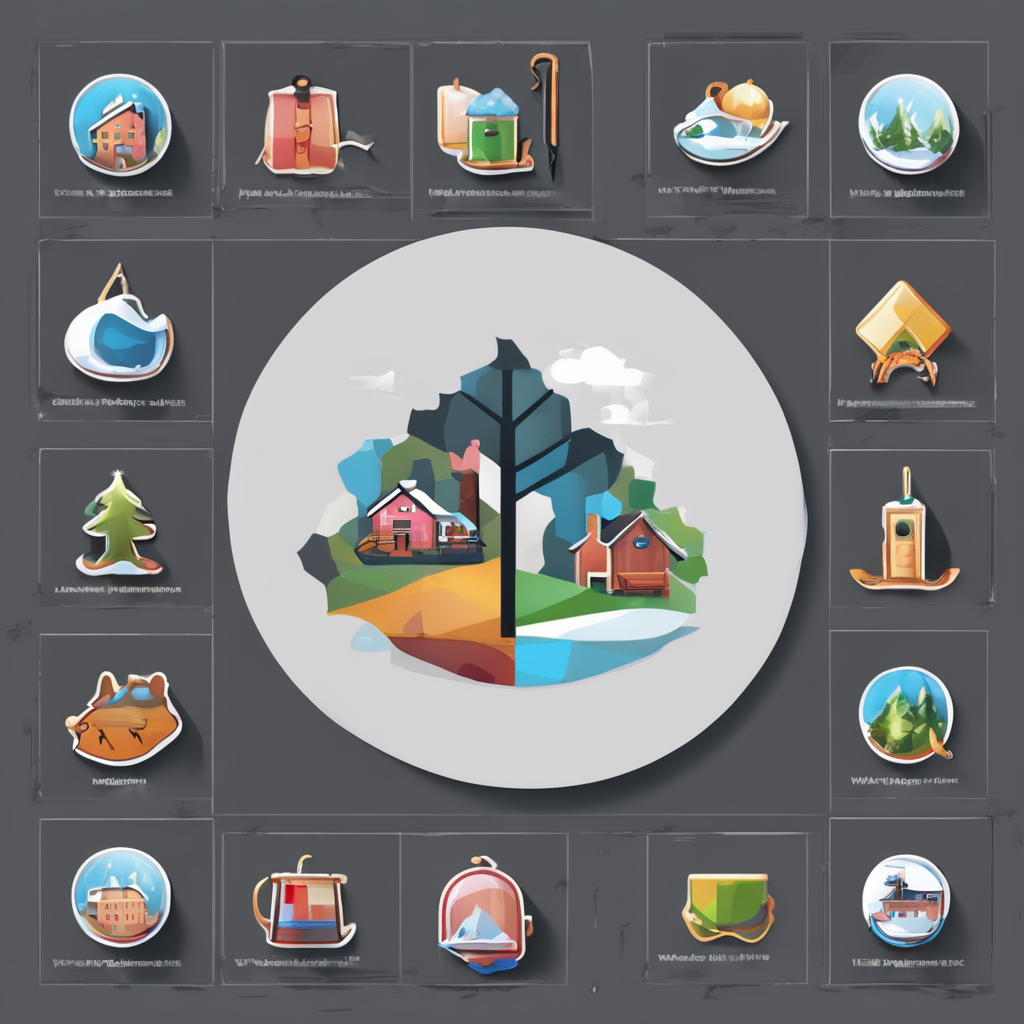Introduction to Accessible Home Design in Manchester
Accessible home design is crucial for fostering inclusive environments that accommodate diverse mobility and functional needs. In Manchester, the incorporation of accessibility features into home design has become increasingly significant. This is due not only to evolving regulations but also to the city’s diverse demographic, which presents a wide array of accessibility needs.
In Manchester, specific regulations and standards mandate that homes be designed with accessibility in mind. These regulations ensure that all residents, regardless of their physical abilities, can access and navigate their homes safely and comfortably. Adhering to these standards not only meets legal obligations but also enhances the quality of life, creating more adaptable living spaces.
Also to read : Transform your derbyshire countryside residence: must-have garden elements to captivate potential buyers
Manchester’s demographic comprises varying age groups and abilities, impacting the demand for accessible home design. An aging population, alongside the presence of individuals with disabilities, underscores the need for homes that are both safe and accessible. By considering these local demographic factors, designers and builders in Manchester are better equipped to address the accessibility requirements unique to the area.
Ultimately, integrating accessibility features into home design is more than merely meeting regulatory requirements; it is a step towards building a more inclusive community.
Have you seen this : The ultimate legal handbook: mastering treehouse building regulations in your london backyard
Key Features of Wheelchair Accessibility
Incorporating wheelchair access is an essential aspect of accessible home design. One critical element is the design of doorways, which should have an adequate width to allow effortless movement. Ideally, doorways should be at least 32 inches wide, ensuring comfortable passage for standard wheelchairs. The threshold designs should be level or gently sloped to prevent tripping hazards and facilitate ease of access.
Ramp installation plays a pivotal role in providing wheelchair accessibility. When planning ramps, it’s important to consider their gradient and placement. A slope ratio of 1:12, meaning one inch of rise per 12 inches of run, is recommended to ensure user safety and comfort. Ramps should also be installed at primary entrances or wherever there is a change in elevation to ensure comprehensive accessibility throughout the home.
Another crucial feature is smooth flooring transitions. Flooring materials should enable easy maneuverability and avoid obstructions or sudden changes in height. By choosing materials such as linoleum or low-pile carpets, homeowners can create a seamless surface, reducing the risk of accidents and improving mobility for wheelchair users. These accessibility measures are fundamental in designing homes that meet the unique needs of wheelchair users, promoting independence and ease in daily activities.
Adjustable Fixtures for Diverse Needs
Incorporating adjustable fixtures is a key aspect of designing more versatile and adaptable homes. This ensures that spaces within the home can cater to a wider range of needs. A vital consideration is the integration of adjustable countertops and sinks, both in kitchens and bathrooms. This feature allows for the alteration of surface heights, accommodating the unique requirements of individuals across different heights and abilities. By incorporating variable levels, homeowners can ensure that these areas remain functional and accessible to everyone in the household.
In terms of lighting, the inclusion of motion-sensor lighting and strategically positioned, easily reachable switches can significantly enhance the livability of a home. These modern lighting solutions not only aid in energy efficiency but also bolster convenience by eliminating the need for manual operation, thus accommodating various levels of mobility.
Moreover, the thoughtful selection of adjustable furniture in common areas can further transform living spaces. These adaptable pieces allow homeowners to rearrange and redefine spaces swiftly, ensuring that rooms can evolve to meet current and future needs. Embracing flexible furnishings ensures that a home can remain practical and enjoyable for everyone.
Designing Adaptable Layouts
Incorporating adaptable layouts in home design is crucial to enhancing mobility and functionality. One effective approach is adopting an open floor plan. This design minimizes physical barriers, fostering easy navigation for individuals with diverse mobility needs. Open spaces not only provide a visually appealing environment but also contribute to a more inclusive living experience.
Creating flexible spaces that can evolve over time is another significant consideration. By using movable partitions or modular furniture, homeowners can seamlessly adjust their living areas to meet changing needs or accommodate mobility aids such as wheelchairs. This adaptability ensures that homes remain practical and comfortable for years to come.
When designing these spaces, it’s important to consider sightlines and navigation. Ensuring clear, unobstructed views and pathways throughout the home enhances safety and usability. This meticulous planning allows for more natural movement, reducing the risk of injuries and making everyday activities more manageable for all residents.
Safety Features in Accessible Home Design
Incorporating essential safety features in accessible home design is vital for enhancing overall home safety and promoting fall prevention. One critical aspect is the installation of grab bars in key areas like bathrooms and stairways. These bars provide additional support, reducing the risk of slipping and aiding those with mobility challenges.
Non-slip surfaces play a crucial role in preventing accidents within the home. Opting for non-slip flooring materials in areas prone to moisture, such as kitchens and bathrooms, is beneficial. These materials help to reduce the risk of falls, providing more secure footing.
Moreover, ensuring adequate lighting and visibility throughout the home is indispensable. Strategically placed lights in corridors and staircases enhance visibility, making it easier for residents to navigate safely at any time of day. Utilizing dimmers and nightlights can also contribute by providing appropriate lighting levels that adjust to different conditions.
The integration of smart technology can further bolster safety. Devices such as smart smoke detectors and security systems offer real-time alerts, ensuring quick responses to potential threats. This technology not only improves safety monitoring but also provides peace of mind to homeowners and their families.
Understanding Local Building Codes in Manchester
In Manchester, adherence to specific building codes is crucial when designing accessible homes. These codes, grounded in Manchester regulations, aim to ensure that homes cater effectively to the varied needs of all residents, promoting inclusive living environments. Complying with these accessibility standards is not only legally prudent but elevates the overall safety and functionality of living spaces.
For homeowners, understanding these Manchester regulations is vital. Local authorities provide comprehensive resources outlining these codes, enabling residents to stay informed and compliant. By consulting these guidelines, homeowners and builders can ensure that any modifications or new constructions adhere to accessibility requirements.
Non-compliance with these codes can lead to significant complications. Beyond legal repercussions, failing to follow building codes can compromise the safety of a home, potentially increasing risks for its residents. Therefore, it is essential for those involved in home design to prioritize adherence to these accessibility standards, ensuring both legal compliance and enhanced living conditions for everyone.
Resources for Designing Accessible Homes in Manchester
Designing an accessible home in Manchester comes with an array of local resources to streamline the process. Homeowners can engage with architectural firms and consultants who specialize in accessibility designs. These professionals have in-depth knowledge of the Manchester-specific regulations and can guide in implementing essential accessibility features tailored to individual needs.
Moreover, the local government provides programs and incentives for those seeking to modify their homes. These initiatives aim to offset costs related to making homes more adaptable and inclusive. For instance, grants may be available for modifications like ramp installations or installing motion-sensor lighting, enhancing overall accessibility.
Community organizations offer invaluable support for individuals with disabilities or families needing advice on designing accessible homes. These organizations not only provide practical guidance but also foster a network of shared experiences and resources, facilitating a collaborative approach to home adaptation. By leveraging these local resources, homeowners in Manchester can make informed decisions in creating spaces that are both functional and welcoming.




